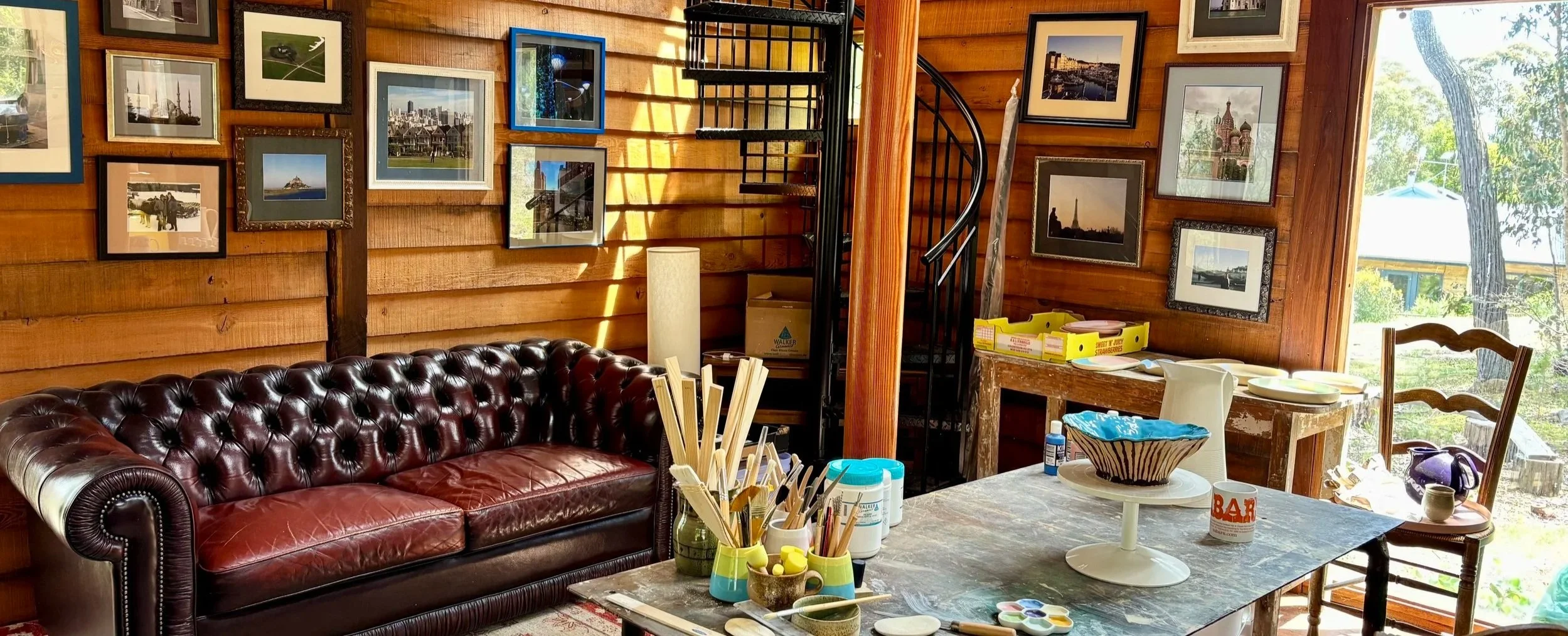
ceramics studio
Terrara Estate ceramics studio was something Venetia had hoped to make a reality. After a long career in the corporate world she has stepped away and returned to the tactile clay she loves.
Venetia chooses to hand build her pieces. This slower approach means there is greater opportunity for reflection and connection with the natural beauty of the bush surroundings which is evident within her work.
Venetia strives to embrace the perfection of imperfection which nature sets as an example for us all. The asymmetrical and organic forms and her decorative style reinforce this connection. Brushstrokes are celebrated and their fluidity is felt within the final pieces. The varying thicknesses of functional and decorative pieces make visible the simple tools used to make them. Each of these elements contribute to the presence of the natural world within Venetia’s work.
Venetia’s decorative style is abstract and fluid, using the clay as a canvas for her designs which are influenced by the landscape. Undulating hills, flowing rivers, towering trees, scrubby bush, the night sky and the seasons all contribute to the elemental nature of her work. 20th century abstract art and the modernist ideals of mid-century design and architecture each play a role in influencing Venetia’s style.
Clays are chosen for their natural qualities. Small iron particles and minerals that melt during firing become visible as speckles within the vitrified clay. Areas of raw clay are left exposed, making the interplay between the decorated elements and the natural material felt within each piece.
Venetia’s work is mid-fired. The development of electric kilns and their continued technological advances have enabled more precise management of the kiln during firing. Mid-fire clays and glazes have consequently become increasingly popular. They provide the same level of strength and durability as higher-firing clays meaning they are well suited to both functional and decorative work. Venetia’s use of colour is achieved through both under and over glazes and the lower firing temperature allows her to achieve bolder and more consistent results.
The reduced temperature (~1200-1220C) for mid-fire vitrification is estimated to save up to 30% in firing costs and energy consumption when compared with high-fire/stoneware.
